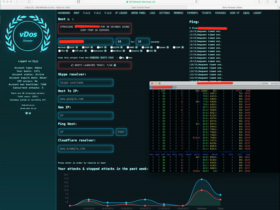Vertical farming, also referred to as indoor farming, is believed to be the farming option of the future. Though it is a relatively new way of farming, there is an increase in the number of people and companies investing in vertical farming on a large scale. Vertical farming companies are raising millions of dollars in their facilities as they establish new ones.
When it comes to creating the perfect vertical farming environment, whether doing it for small scale or large scale, the most important factor is investing in the best lighting technology. If you are new to indoor farming, vertical farming lighting does not have to be expensive. LED lighting companies offer a wide range of vertical grow lights to meet different user needs.
Here is everything you need to know about grow lights.
What are grow lights?
A grow light can be termed as an artificial light source of an electric component designed to stimulate the growth of plants in an indoor setting. This lighting emits electromagnet spectrums that support photosynthesis. These lights are used in indoor grow houses where natural lighting is not sufficient, and thus artificial lighting is required.
For instance, vertical garden grow lights can be used in winter, with limited natural lighting. These lights will sully additional lighting to support plant growth during this time. This way, you can still grow your fruits and vegetables indoors, even during unfavorable outdoor seasons.
For large scale farming options, grow lights can be used to replace natural lighting completely. In some functions, grow lights can outperform sunlight.
Types of vertical grow lights.
Generally, vertical grow lights come in three categories. These are fluorescent grow lights, HID/HPS grow lights, and LED grow lights.
Fluorescent vertical grow lights.
These are commonly used when growing vegetables or herbs indoors. They come in two types, including fluorescent tubes and CFLs (compact fluorescent lights).
Fluorescent tubes are available in different varieties for different light intensities. They last longer are more energy-efficient compared to incandescent bulbs. Fluorescent bulbs are thin, making them perfect for small spaces. The downside is that they need ballast for current regulation and the tubes need a stand in the place of a conventional bulb socket. This can make the cost of installation high.
CFLs are increasingly being used as the lighting options in most households. They consume at least 70% less energy compared to incandescent bulbs and have a lifespan that is up to 8 times longer. This makes them affordable options for vertical farming. The best part is that CFLs only emit the required heat, making it possible for farmers to keep them close to the plant.
Led grow lights
While LED technology was first discovered in the 1900s, blue and red LED lighting perfect for indoor farming was only available from the 2000s. These are the most energy-efficient types of indoor grow lights in all categories. While they can be placed farther from the plants, they have the ability to produce enough light without using too much power.
LED grow lights are 50% more efficient than CFLs and LED iBond lights to create the perfect indoor environment to grow any food type.
HID/HPS grow lights
These types of indoor garden lights have become increasingly popular over the last few years. They are commonly used by commercial indoor growers or experienced ones. They use a sophisticated and well-established technology that spans over 75 years.
The downside to this type of lighting is the amount of heat it emits. This means that the lighting has to be kept far from the plants. They are also expensive to set up and maintain. HPS is thus not the best option for small-scale indoor farmers.
If you plan on growing food on a large scale, LED grow bulbs are the best long-term investment if you want to save energy and reduce your power bill. In many ways, LED indoor lighting is better for plant growth than natural lighting.









Leave a Reply